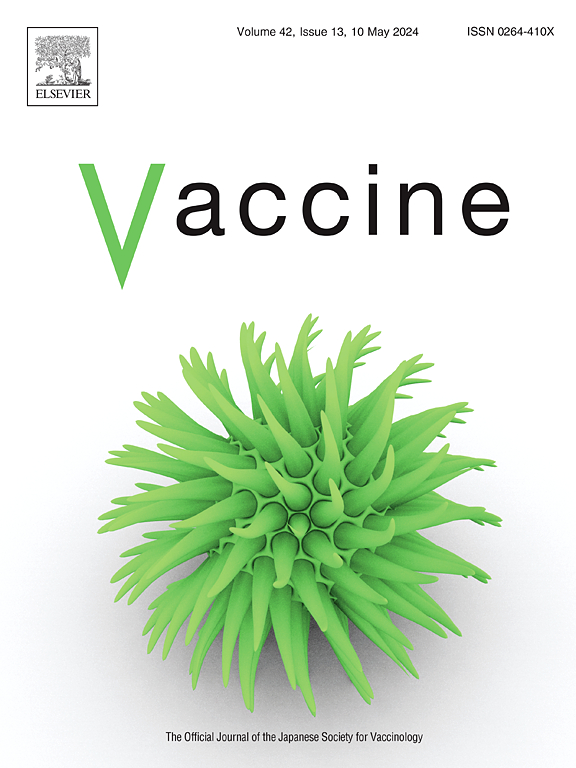Targeting the early life stages of SARS-CoV-2 using a multi-peptide conjugate vaccine
IF 4.5
3区 医学
Q2 IMMUNOLOGY
引用次数: 0
Abstract
The spike glycoprotein is a key factor in the infection cycle of SARS-CoV-2, as it mediates both receptor recognition and membrane fusion by the virus. Therefore, in this study, we aimed to design a multi-peptide conjugate vaccine against SARS-CoV-2, targeting the early stages of the virus's life cycle. We used iBoost technology, which is designed to induce immune responses against low- or non-immunogenic epitopes. We selected six peptide sequences, each representing a key domain of the spike protein (i.e., receptor binding domain (RBM), subdomain 1 (SD1), subdomain 2 (SD2), S1/S2, fusion peptide and the S2’ sequences (FP + S2’), heptad repeat 1 (HR1)). Immunization studies in mice displayed targeted humoral and cellular immune responses against specific peptides of the spike protein simultaneously, while inducing cross-protection against the Delta and Omicron coronavirus variants. Moreover, vaccinated hamsters challenged with SARS-CoV-2 elicited high antibody levels against key peptides, induced early neutralizing antibody responses and resulted in less weight loss compared to controls. This highlights the potential for improving viral control and disease outcomes when utilizing this strategy. Therefore, by using iBoost technology in conjunction with our peptide design strategy, we were able to successfully target non-immunodominant regions in the spike protein while activating both arms of the adaptive immune system.
求助全文
约1分钟内获得全文
求助全文
来源期刊

Vaccine
医学-免疫学
CiteScore
8.70
自引率
5.50%
发文量
992
审稿时长
131 days
期刊介绍:
Vaccine is unique in publishing the highest quality science across all disciplines relevant to the field of vaccinology - all original article submissions across basic and clinical research, vaccine manufacturing, history, public policy, behavioral science and ethics, social sciences, safety, and many other related areas are welcomed. The submission categories as given in the Guide for Authors indicate where we receive the most papers. Papers outside these major areas are also welcome and authors are encouraged to contact us with specific questions.
 求助内容:
求助内容: 应助结果提醒方式:
应助结果提醒方式:


